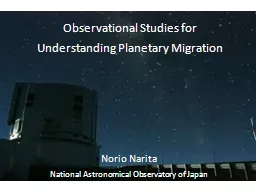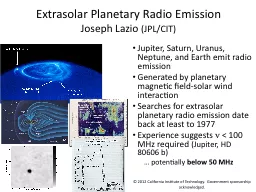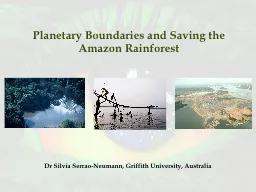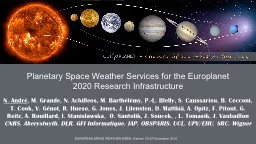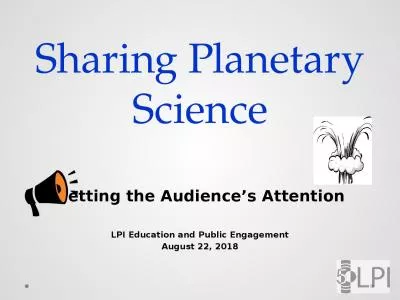PPT-EART160 Planetary Sciences
Author : celsa-spraggs | Published Date : 2015-11-16
Francis Nimmo Last Week Volcanism How and why are melts generated Increase in mantle potential temperature or Reduction in solidus temperature eg water or Thinning
Presentation Embed Code
Download Presentation
Download Presentation The PPT/PDF document "EART160 Planetary Sciences" is the property of its rightful owner. Permission is granted to download and print the materials on this website for personal, non-commercial use only, and to display it on your personal computer provided you do not modify the materials and that you retain all copyright notices contained in the materials. By downloading content from our website, you accept the terms of this agreement.
EART160 Planetary Sciences: Transcript
Download Rules Of Document
"EART160 Planetary Sciences"The content belongs to its owner. You may download and print it for personal use, without modification, and keep all copyright notices. By downloading, you agree to these terms.
Related Documents


